The appeal of a sunroof is undeniable. That open-air sensation, natural sunlight pouring in, and the panoramic view of the sky transform even the most ordinary drives into elevated experiences.
Whether it’s a traditional tilt-and-slide design or a modern panoramic glass roof stretching from the windshield to the rear seats, a sunroof is a feature that many car buyers actively seek out.
Manufacturers often market them as symbols of openness, luxury, and design sophistication. However, what many brochures fail to mention is that beneath the polished aesthetics and alluring features, sunroofs are often one of the most problem-prone components in modern vehicles.
The reality is, sunroofs are complex mechanisms that must remain fully weather-sealed while simultaneously functioning as movable parts within the vehicle’s structure.
They’re exposed to rain, snow, heat, and cold. They rely on rubber seals that shrink and dry out, drain tubes that can clog, and sunroof tracks that must remain perfectly aligned over the years.
When something goes wrong—and it often does—it usually manifests in one of the most irritating and destructive ways: water entering your car’s cabin. This can lead to soggy seats, stained headliners, mold growth, shorted electrical systems, and thousands in repairs.
And yet, while some vehicles seem to keep their interiors bone-dry even a decade later, others develop leaks seemingly within months of leaving the lot.
This article sets out to explore both sides of that equation. On one hand, we highlight five vehicles with sunroofs that have proven to be reliably leak-resistant, engineered with thoughtful drainage systems, high-quality seals, and durable construction. These are the models where you can enjoy your open-air experience without fearing the first raindrop.
On the other hand, we take a hard look at five vehicles with sunroofs that are notorious for leaking—cars and SUVs that, despite their appealing features or stylish appearances, have developed reputations for poor long-term performance in this critical area.
From faulty seal materials to flawed drainage design, these examples showcase what can go wrong when manufacturers don’t get the sunroof formula quite right.
It’s important to note that not all sunroof leaks are the result of user neglect or poor maintenance. While keeping the drain holes clear and checking the seals regularly certainly helps, some designs are simply more vulnerable from the start.
The issue is often systemic—embedded in how the roof assembly was integrated into the vehicle’s structure, or how the drain tubes were routed. That’s why two owners can have identical sunroof systems but vastly different outcomes depending on climate, usage, and even how the car was assembled at the factory.
So whether you’re in the market for a new car or considering a used vehicle with a sunroof, this guide is designed to help you make a smarter, more informed decision. Leaky sunroofs can turn joy into frustration fast—but with the right vehicle, you can enjoy the view above without ever worrying about what’s coming down.
Also Read: 7 SUVs That Allow Full-Height Box Loading With Ample Cargo Space
5 Car Sunroofs That Never Leak

1. Lexus RX Series
When it comes to high-end luxury vehicles, Lexus has consistently set the bar for both performance and durability, and the RX Series is no exception.
Renowned for its impeccable engineering, this mid-size luxury crossover features a sunroof system that stands out in terms of long-term reliability, offering a driving experience that is both pleasant and practical.
The RX’s sunroof is available in both traditional moonroof and panoramic configurations, and it’s designed with precision to ensure minimal risk of water intrusion.
What makes the RX’s system so dependable is the way Lexus handles both the seals and the drainage system. Unlike many sunroofs that rely on substandard rubber seals prone to wear and deterioration, the RX uses multi-layered, high-quality gaskets that offer a robust barrier against rain, snow, and moisture over the years.
Additionally, Lexus’ attention to detail in the drainage channels is one of the key factors that ensures the sunroof remains leak-free.
The RX’s drainage tubes are designed to prevent water from pooling in the roof assembly and quickly redirect excess water away from the cabin. These tubes are positioned strategically to ensure that water has a direct path to exit, without any kinks or bends that could lead to clogs.
Over time, the rubber seals remain intact and the drainage system remains effective, even after the car has been exposed to extreme weather conditions. Real-world performance proves that the RX’s sunroof remains free from leaks, with owners reporting minimal maintenance issues even in cars with high mileage.
The fact that the sunroof continues to perform reliably in heavy rainstorms and snow without compromising the interior integrity is a testament to Lexus’ commitment to craftsmanship.
This sunroof system delivers on its promise to keep the cabin dry, offering a seamless combination of luxury and practicality for owners looking for both comfort and functionality.
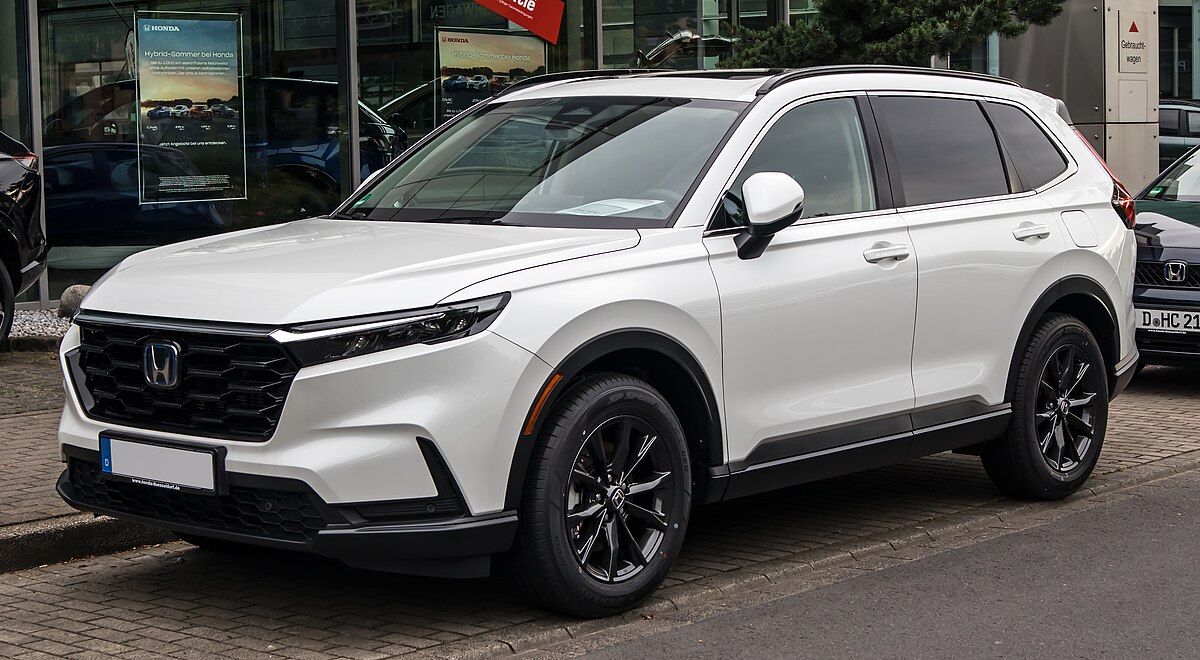
2. Honda CR-V
The Honda CR-V has long been one of the most popular compact SUVs on the market, favored for its practicality, reliability, and impressive longevity. One of the unsung heroes of the CR-V’s design is its sunroof system, which stands out for its remarkable durability and ability to stay leak-free throughout years of use.
Unlike many of its competitors, the CR-V utilizes a more traditional, tilt-and-slide moonroof, which, while simpler than panoramic roofs, tends to be more reliable over time.
This simplicity plays a key role in preventing leaks, as it reduces the number of parts that could potentially fail, and the smaller opening places less stress on the seals. Honda’s engineers have designed the sunroof seals with precision, ensuring that they remain intact and weather-resistant, even as the vehicle ages.
One of the standout features of the CR-V’s sunroof is the drainage system. Unlike many vehicles where clogged or misaligned drain tubes cause water to back up and leak into the cabin, the CR-V’s system is engineered with large, open drainage channels that are resistant to blockages.
The tubes themselves are positioned to drain water efficiently, keeping moisture away from the vehicle’s interior. This straightforward, highly effective design minimizes the risk of debris getting caught in the system, which could otherwise lead to water leakage.
Additionally, the weatherproof seals are made from high-grade rubber, which holds up to frequent use and exposure to the elements. Long-term CR-V owners often report minimal issues with leaks, with some even going beyond 100,000 miles without ever having to deal with a single issue of water ingress.
This level of reliability is what makes the CR-V’s sunroof stand out in the highly competitive compact SUV market, providing peace of mind to owners who need a functional and leak-resistant sunroof.
Furthermore, Honda’s thoughtful maintenance recommendations for sunroofs—such as cleaning the drain holes regularly—ensure that the sunroof stays in optimal condition.
Despite being one of the more affordable compact SUVs, the CR-V’s sunroof system holds its own in terms of both quality and durability. For owners who appreciate simplicity, reliability, and low maintenance costs, the CR-V is a prime example of how a well-engineered sunroof system can offer years of hassle-free enjoyment.
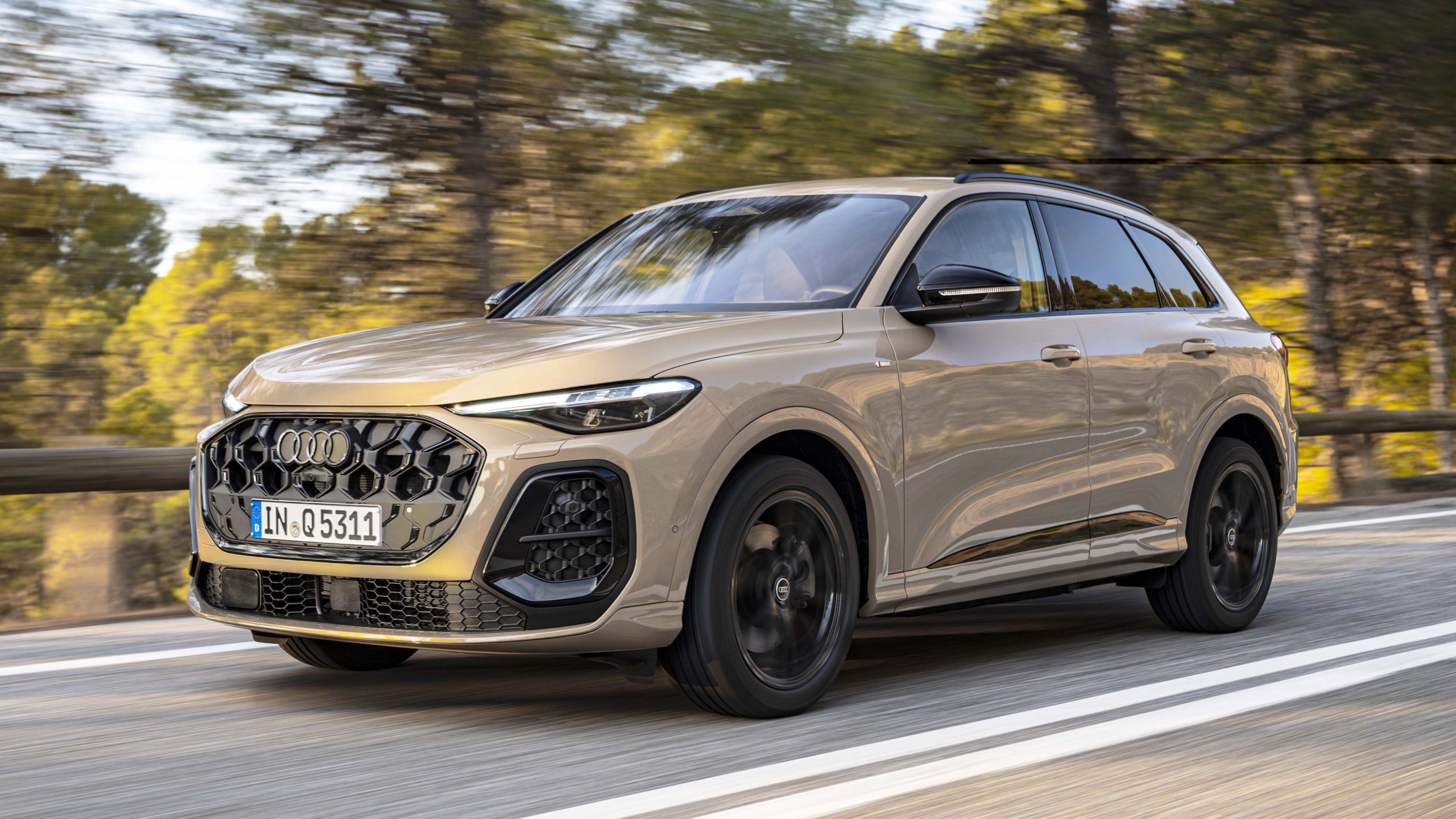
3. Audi Q5
For those in search of a premium luxury SUV, the Audi Q5 is an excellent choice, and it comes equipped with a sunroof system that’s built to last. Audi has earned a reputation for sophisticated, high-quality engineering, and the Q5’s sunroof reflects that commitment to precision.
Unlike many panoramic roofs, which can be prone to leaks due to their expansive size, the Q5’s large panoramic sunroof is designed with durability and efficiency in mind. It’s equipped with advanced sealing technology that ensures the glass panel remains firmly in place, and the seals continue to work effectively, even after years of exposure to harsh weather conditions.
Audi uses specialized rubber seals that not only provide a tight barrier against moisture but are also flexible enough to withstand the pressure of expansion and contraction due to changing temperatures.
One of the reasons the Q5’s sunroof is so reliable is the highly-engineered drainage system, which is one of the best in the industry. Audi uses multiple drain tubes, placed in optimal positions to handle high volumes of water without clogging or misdirecting moisture.
The redundant channels provide an extra layer of protection, ensuring that even if one channel becomes blocked, the remaining systems will still direct the water away from the interior. The result is a near foolproof design that keeps moisture at bay, providing the peace of mind that many luxury SUV owners look for.
Audi has also been meticulous in the way it builds the sunroof frame. Constructed with reinforced materials that resist warping over time, the Q5’s sunroof is less susceptible to issues such as seal misalignment that could result in leaks.
Beyond the engineering, real-world customer feedback also supports the Q5’s reputation for long-term durability. Audi Q5 owners rarely report issues with their sunroof systems, even after years of use.
Whether it’s the panoramic roof on a brand-new model or a more traditional sunroof on an older one, the Q5 continues to impress with its ability to resist leaks and stay sealed tight. This reliability, combined with Audi’s refined luxury, makes the Q5 one of the top choices for those looking for a vehicle with a sunroof that performs flawlessly for years.
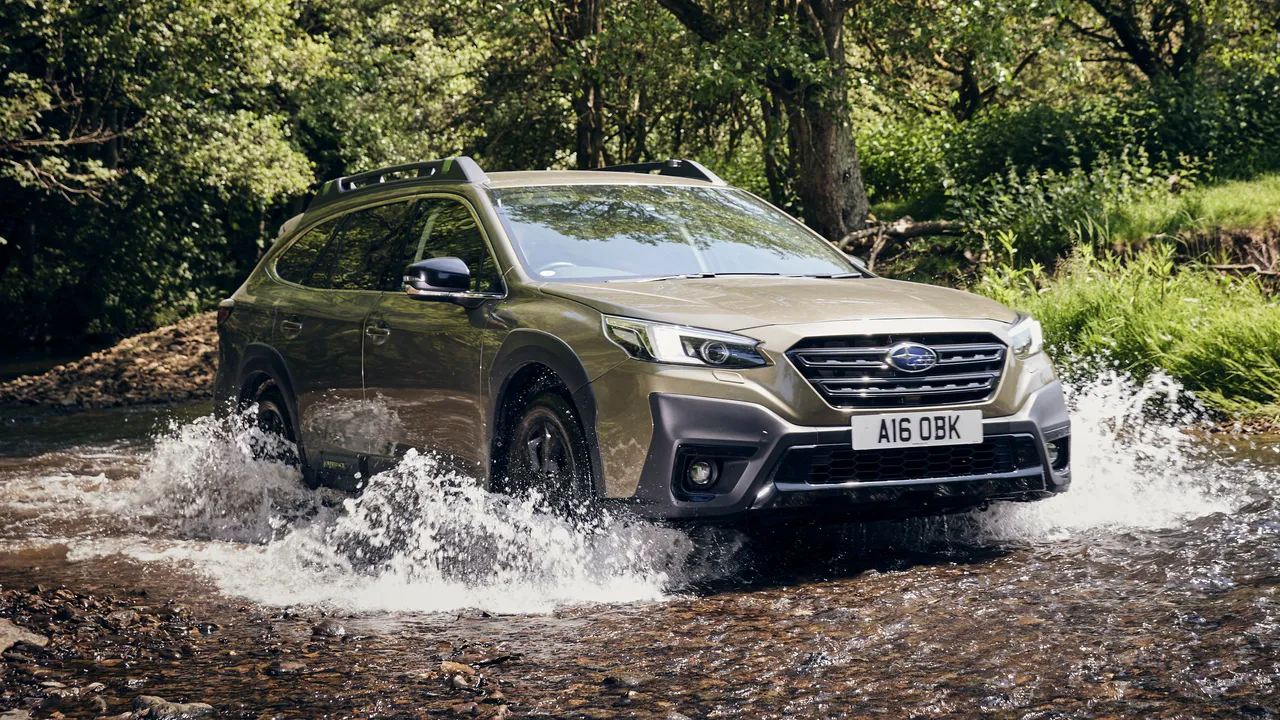
4. Subaru Outback
Known for its rugged capabilities and excellent resale value, the Subaru Outback is not only an ideal vehicle for outdoor adventures, but it also comes equipped with one of the most dependable sunroof systems in the industry.
Subaru’s Outback features a traditional-sized sunroof that combines durability with simplicity. This design minimizes the chances of mechanical failure, and it benefits from Subaru’s meticulous engineering standards.
The seals used in the Outback’s sunroof system are built from high-quality materials that ensure a reliable, water-tight barrier. Rubber gaskets fit snugly around the glass panel, preventing water from sneaking into the cabin—even during heavy rainfall or after prolonged exposure to the elements.
The drainage system of the Outback’s sunroof is another area where Subaru excels. The drainage channels are built to be wide and clear, which reduces the likelihood of debris getting caught and causing blockages.
The drain tubes are designed with a direct path for water to flow away from the vehicle’s interior, and they are typically made from durable materials that won’t warp or crack over time.
Subaru also takes extra care to position the drainage channels in ways that prevent water from pooling in unwanted areas.
As a result, even after years of driving through dirt roads or encountering muddy conditions, the Outback’s sunroof remains leak-resistant. Long-term owners of the Outback frequently report that their sunroofs continue to perform without issue, with no leaks or concerns even after high-mileage ownership.
The Outback’s sunroof system also benefits from the fact that it’s typically used less frequently than larger panoramic systems, keeping wear and tear to a minimum. This system is designed for low maintenance, requiring little more than occasional cleaning of the drain holes to keep everything functioning smoothly.
Subaru’s commitment to durable and practical designs means that the Outback’s sunroof remains a reliable feature, delivering functionality and peace of mind for years to come.
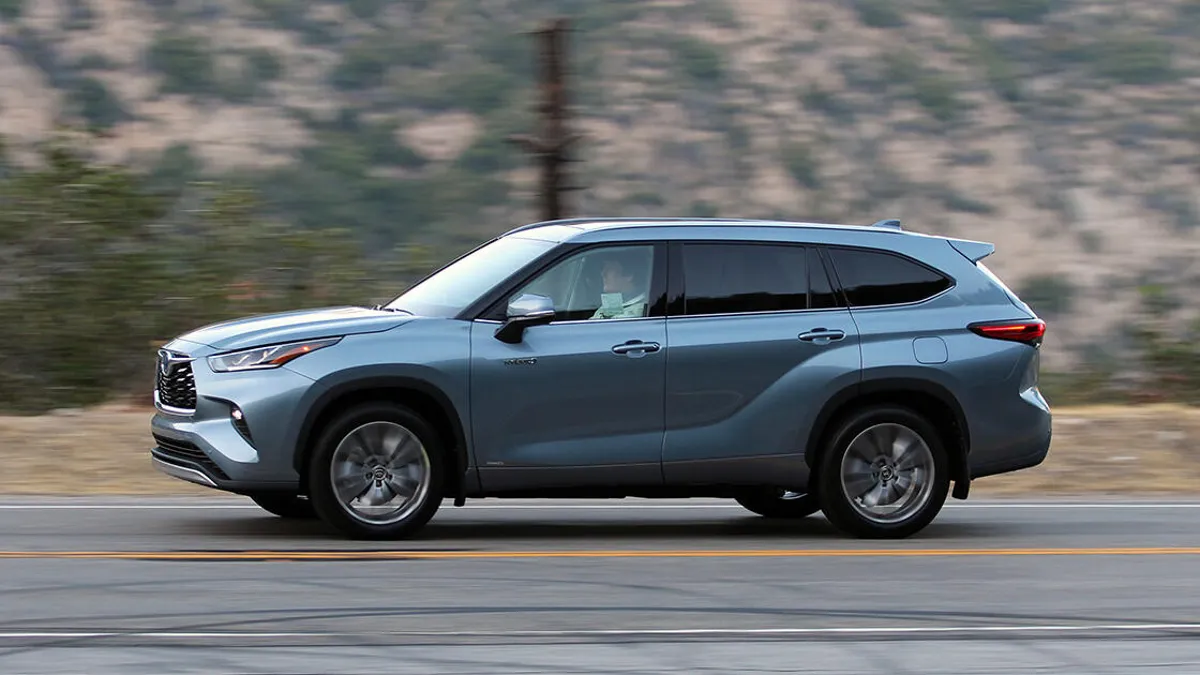
5. Toyota Highlander
The Toyota Highlander is a reliable, family-oriented SUV that offers a balanced mix of comfort, performance, and versatility. A standout feature of the Highlander is its sunroof system, which combines durability, ease of use, and leak-proof reliability.
Whether it’s the standard moonroof or the larger panoramic roof, the Highlander’s sunroof system is engineered to remain effective and weather-tight throughout the years.
Toyota uses high-quality seals that form a tight barrier against water and moisture, helping to prevent leaks even after prolonged use and exposure to the elements. The frame of the sunroof is made from strong, reinforced materials, ensuring that it won’t warp or degrade over time, which can often be a cause of leaks in less durable systems.
The Highlander also benefits from an efficient drainage system. With well-positioned drain tubes that direct water away from the interior, Toyota ensures that water doesn’t have the chance to seep into the cabin.
These drain tubes are designed to remain clear and functional for the long haul, minimizing the risk of blockages that can lead to leaks. The drainage channels are engineered to resist wear, and they are less prone to damage compared to the more fragile systems found in other vehicles.
Real-world feedback from Highlander owners consistently reports that the sunroof system holds up well over time, with few, if any, instances of leaks or water damage.
Beyond its durability, the Highlander’s sunroof offers convenience and ease of use. The system is simple to operate, with few moving parts and a smooth, reliable action.
For families looking for a sunroof that can handle everyday use and withstand the rigors of daily driving without becoming a source of frustration, the Highlander is an excellent choice. Toyota’s reputation for dependability is reflected in the Highlander’s sunroof, making it a standout in its segment.
5 Car Sunroofs That Always Leak
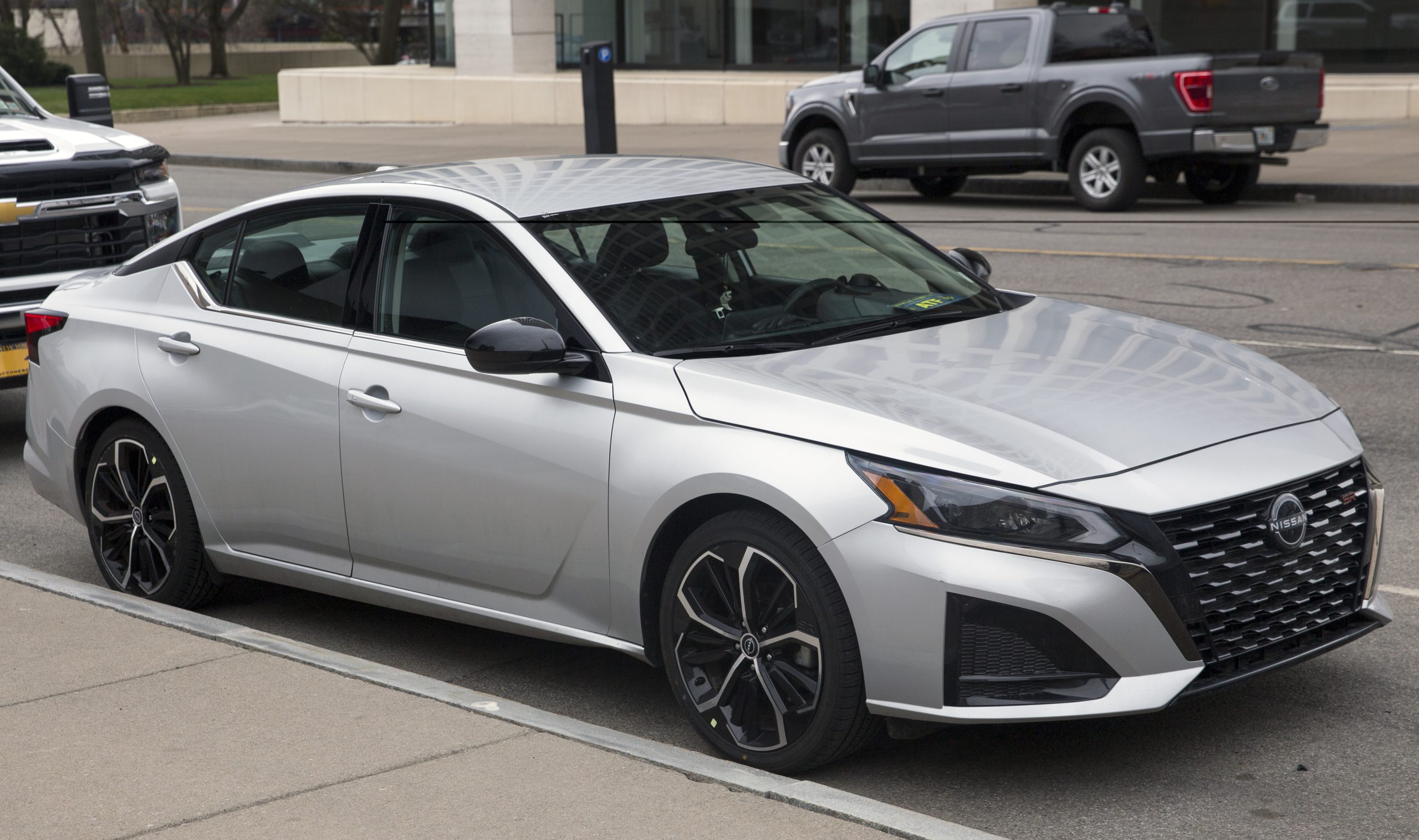
1. Nissan Altima (2007–2012)
The Nissan Altima from the late 2000s to early 2010s is unfortunately a textbook case of a vehicle with a poorly executed sunroof system.
While the car itself gained popularity for its balance between affordability and sporty appeal, the sunroof introduced significant headaches for many owners. The issue stems from a combination of factors: cheap rubber seals that degrade quickly, poorly routed drain tubes, and inconsistent build quality.
These design flaws led to countless reports of leaks occurring as early as two to three years into ownership. The rubber gaskets around the glass panel were especially prone to cracking, shrinking, or losing adhesion, allowing rainwater to seep through during heavy downpours or even while driving through a car wash. Once the initial seal was compromised, the water intrusion often escalated quickly.
What made things worse was the inadequate drainage system. The Altima’s drain tubes were thin, narrow, and not well secured in place. Over time, debris like pollen, leaves, or even small amounts of dirt could easily clog these drains, causing water to back up and overflow into the interior cabin. In many cases, this water would accumulate above the headliner and eventually drip down onto the dashboard, the seats, or even into the footwells.
Some owners even experienced malfunctioning electrical components due to moisture exposure, adding to the already frustrating scenario. Even diligent maintenance—like cleaning the sunroof channels—often couldn’t prevent issues because the design was flawed from the beginning.
This problem wasn’t isolated to a few unlucky owners; forums, consumer complaint websites, and even class-action lawsuits reveal a widespread issue that Nissan was slow to acknowledge. Many dealerships responded with temporary fixes, like sealants or drain cleanings, but rarely did these solutions offer lasting results.
In the end, the Altima’s sunroof system from this era became synonymous with unreliability, and many consumers learned the hard way that a simple feature meant to add a touch of luxury could lead to long-term regret.
For anyone considering a used Altima from this period, the sunroof’s potential for leaking should be one of the first things examined before purchase.

2. Volkswagen Tiguan (2009–2017)
While the Volkswagen Tiguan has often been praised for its stylish looks, tight handling, and solid build quality, the first-generation model was plagued by a frustrating and recurring issue: sunroof leaks. The Tiguan’s optional panoramic sunroof—a desirable feature on the surface—was implemented with a surprisingly weak design underneath.
One of the most significant problems was VW’s use of overly intricate drainage systems that, while theoretically effective, proved extremely vulnerable to clogging in real-world conditions.
The sunroof used a system of drain tubes at each corner that funneled water down the A- and C-pillars, but the complexity of the setup meant that any slight obstruction would cause water to divert into unintended parts of the cabin.
The seals surrounding the glass also didn’t help matters. Over time, they became brittle and shrunk due to UV exposure, making them less capable of keeping water out even in minor rainfall. Compounding the issue was the tight spacing between the seals and the drain trays, which left little room for error.
Once compromised, even small leaks could turn into larger problems, including sagging headliners, soaked carpet padding, and in some cases, corroded connectors that affected everything from lighting to infotainment systems.
The problem wasn’t restricted to older models either—many newer Tiguans continued to suffer from these issues well into their production cycles, suggesting a systemic design flaw rather than a quality-control oversight.
Perhaps most infuriating for owners was the lack of long-term solutions from the manufacturer. Volkswagen dealerships often performed temporary fixes—replacing drain tubes or resealing trim—but the problems usually reappeared within a year or two.
Extended warranties rarely covered the full cost of repairs, leaving owners with expensive bills for what should have been a reliable, premium-level feature.
Many Tiguan drivers eventually resorted to sealing the sunroof shut permanently or avoiding car washes and rainy days altogether. It’s a frustrating example of how a feature designed to add luxury can turn into a costly liability when not properly engineered.
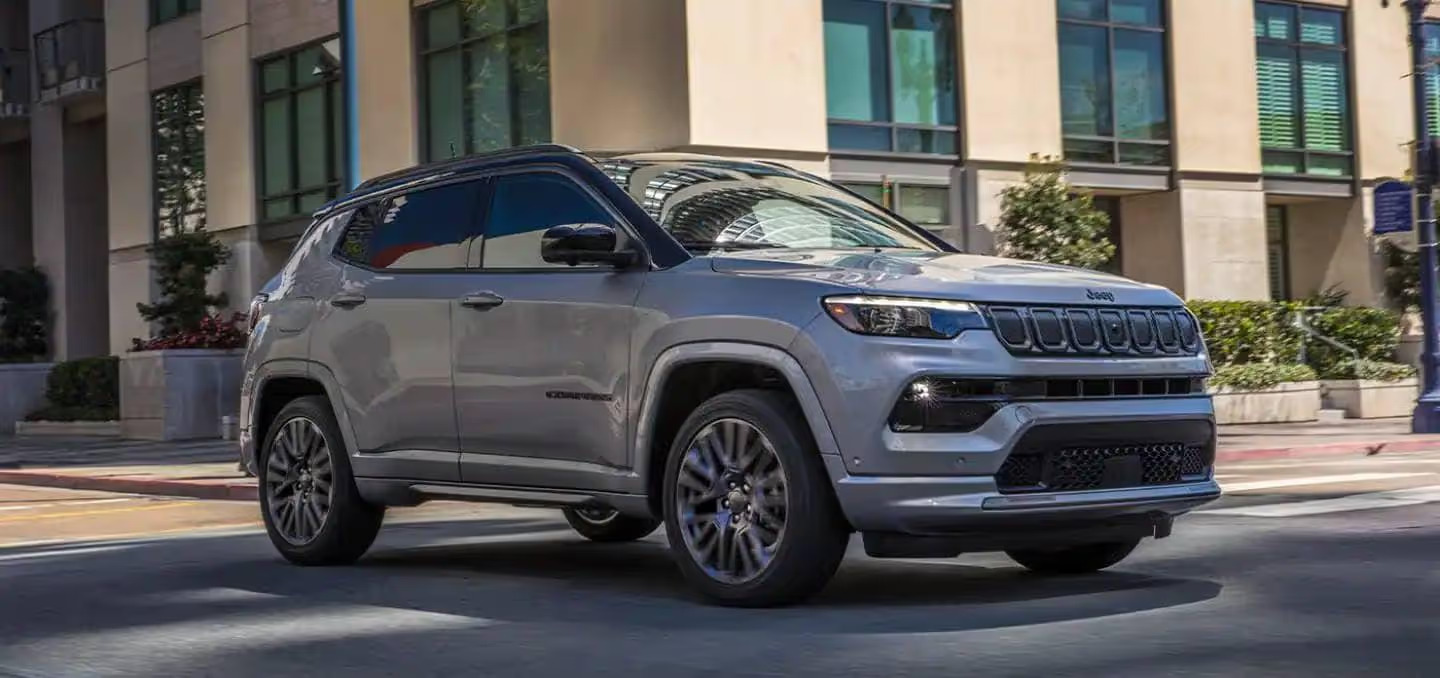
3. Jeep Patriot and Compass (2007–2017)
The Jeep Patriot and its cousin, the Compass, were designed to bring Jeep capability to the compact SUV segment, but unfortunately, their sunroofs quickly gained notoriety for being among the least reliable in their class.
These models were fitted with standard-sized power sunroofs that appeared functional on the surface, but in reality, they were incredibly vulnerable to leaks—and not just a few drips here and there.
Many owners reported water pouring into the cabin during storms, especially along the headliner above the driver and passenger seats.
This wasn’t due to owner neglect; the root cause was a deeply flawed combination of thin seals, poor water management, and cheap internal fittings that simply couldn’t hold up under pressure.
One of the main culprits was the poorly designed drainage system. The front drain tubes often disconnected or cracked due to low-grade plastic connectors that became brittle over time.
Once these tubes failed, water had nowhere to go but straight into the cabin. To make matters worse, the rear drains were difficult to access and prone to clogging, making preventive maintenance challenging even for proactive owners.
Some drivers even experienced water dripping into the fuse box or shorting out dome lights, compounding what should have been a simple annoyance into a full-blown electrical hazard. The design simply lacked the engineering robustness you’d expect in a vehicle associated with rugged off-road reliability.
Compounding the issue was Jeep’s inconsistent dealer response. While some service centers acknowledged the problem and offered repairs, many dismissed it as a minor or owner-induced issue.
This lack of accountability led to widespread frustration and distrust among owners. Numerous Patriot and Compass drivers took to online forums to share DIY solutions, including sealing the sunroof shut with silicone caulk or even covering the roof with waterproof tape during rainy seasons.
These makeshift fixes illustrate how severe and widespread the problem became. In the end, the sunroof in these Jeep models turned out to be a weak link in otherwise capable vehicles—one that often led to moldy carpets, rusted hardware, and costly repairs that far outweighed the sunroof’s original value.

4. BMW 3 Series (E90, 2006–2011)
The BMW 3 Series E90 generation is often lauded for its sharp handling, refined powertrains, and driving pleasure. But hidden beneath its premium badge and sporty styling lies a persistent issue that many owners have come to dread: a sunroof that simply doesn’t stand the test of time.
Specifically, the panoramic sunroof option available in many E90 sedans and wagons has become infamous for leaking—sometimes catastrophically.
The root cause isn’t as simple as just failing seals. In fact, the issue often lies deeper in the complex internal water drainage system, which BMW engineered to be sleek and out of sight but ultimately became prone to clogging, disconnecting, or failing entirely.
The thin, narrow drain tubes—often tucked into the A-pillars—could easily become dislodged or clogged with even light debris like pollen or dust, leading to water backing up into the cabin.
What made the E90 sunroof particularly troublesome is that the resulting leaks were not always immediately noticeable. Water often collected in hidden areas, such as beneath the carpet or behind the dashboard, silently damaging electrical wiring and causing mold to develop long before visual signs of leakage were detected.
Some owners reported moisture pooling in the floorboards or behind trim panels, often accompanied by inexplicable electrical malfunctions—flickering lights, non-functional window switches, or erratic behavior in infotainment systems.
When finally diagnosed, the root cause would trace back to the sunroof’s compromised drainage system, and the fix often required partial disassembly of the interior.
Repairs weren’t cheap, and in many cases, dealers either failed to identify the problem on the first visit or offered only temporary solutions, such as re-sealing the sunroof or flushing the drains—treating symptoms, not causes.
To make matters worse, BMW’s sunroof rails and mechanical components in this generation were also known to warp or jam over time, particularly in colder climates where freeze-thaw cycles expanded and contracted the metal parts. This often prevented the sunroof from closing completely, exacerbating the leak risk.
Despite the car’s otherwise high engineering standards, the E90’s sunroof system became a glaring weakness—a cautionary tale that even premium German engineering can fall short when long-term durability isn’t properly stress-tested.
For prospective buyers of used E90s, checking the headliner, carpet edges, and trunk for signs of past water intrusion is essential, and many owners have opted to either seal their sunroofs shut permanently or budget for costly repairs as a matter of ownership.

5. Ford Edge (2007–2014)
The first-generation Ford Edge was Ford’s answer to the growing demand for midsize crossovers with upscale features—chief among them, the large panoramic sunroof dubbed the “Vista Roof.” It was an attractive option on paper: a vast glass panel offering scenic views and a brighter cabin.
But in practice, this design choice brought with it a host of long-term problems, the most severe being a high incidence of water leaks that undermined the vehicle’s otherwise practical reputation.
Unlike smaller, simpler sunroofs, the Vista Roof had a much larger surface area and relied on a more complex four-corner drainage system, which turned out to be highly susceptible to failure.
Over time, the drains would clog with debris or separate at the fittings, often located deep within the car’s roof pillars—places not easily accessible for inspection or repair.
As the drainage system failed, water had nowhere to go but inside. Owners reported water dripping onto their seats, sun visors, and even the infotainment console.
What made it worse was the poor seal integrity around the glass panel itself. Unlike better-sealed competitors, the Ford Edge’s Vista Roof used a relatively soft rubber compound that deteriorated faster than expected.
The result? Even after clearing the drain tubes, the sunroof could still allow water to seep through the perimeter seals during heavy rain or high-pressure washes. Over time, this contributed to damp smells, mildew growth, and in severe cases, mold buildup beneath the carpeting.
Some Edge owners reported replacing their headliners multiple times due to staining or water damage, and few were able to avoid the issue altogether, especially in humid or rainy climates.
While Ford eventually addressed some of these issues in later models, the damage to the reputation of the first-gen Edge had already been done. Dealerships often treated the leaks as isolated incidents, offering drain cleanings or seal reapplications that didn’t solve the systemic design flaws.
The Vista Roof became an example of how a high-end feature can turn into a long-term liability when not executed with durability in mind. For used-car buyers, a first-gen Edge with a panoramic roof should be approached with caution.
Unless the system has been overhauled or sealed by a professional, there’s a high probability that water intrusion will be a part of ownership at some point. Many owners ultimately chose to retrofit weatherproofing solutions or avoid using the sunroof entirely, a shame considering the feature was meant to enhance the experience—not ruin it.
As this list has shown, a sunroof can either be a highlight of your car-owning experience—or a persistent source of frustration. What separates the winners from the losers in this category isn’t always the size of the panel, the complexity of the mechanism, or even the brand name—it’s all about engineering execution.
Vehicles like the Lexus RX, Audi Q5, and Subaru Outback shine not just because they offer the sunroof feature, but because they do so in a way that’s integrated with long-term reliability in mind.
Thoughtful drainage paths, high-grade seals, and robust build quality ensure that these sunroofs don’t become liabilities over time. When manufacturers take the time to refine these systems, the result is a car that gives you all the joy of open-air motoring—without the headaches.
On the flip side, cars like the Nissan Altima, Jeep Patriot, and early VW Tiguan remind us that even a small flaw in a sunroof’s design can cascade into major problems for owners. Whether it’s narrow or disconnected drain tubes, low-grade sealant materials, or poor installation at the factory, these missteps create the perfect storm for leaks.
And once water finds its way inside, the damage multiplies—ruined upholstery, electrical short circuits, foul odors, and a loss of resale value. What begins as a minor nuisance can quickly spiral into a major expense.
For many drivers, these sunroofs end up being permanently closed, patched, or sealed—essentially nullifying the very feature they once paid extra for.
The lesson here isn’t necessarily to avoid sunroofs altogether—after all, they can genuinely enhance a driving experience. Instead, the takeaway is this: do your research. Not all sunroofs are created equal.
Understanding how the system is engineered, how long it’s been in use across the model line, and how well it holds up in the real world can save you a great deal of trouble.
Manufacturer reputation matters, but so does attention to detail in specific models and production years. A brand may offer a solid sunroof in one vehicle while delivering a subpar version in another, depending on platform, design, and even third-party suppliers.
Moreover, even in cars with reliable systems, routine maintenance plays a vital role in long-term performance. Regularly clearing the drain holes, inspecting the seals for wear, and checking for early signs of leaks can help extend the life of your sunroof. It’s a small investment of time that can pay off in big ways down the road.
Ultimately, the sunroof should be a feature of freedom and enjoyment, not stress and anxiety. Whether you’re buying new or used, understanding which vehicles are leak-prone and which are leak-proof helps you make an informed choice that aligns with your expectations.
Choose wisely, maintain carefully, and you’ll get to enjoy the best the open sky has to offer—without worrying about water coming in from above.
